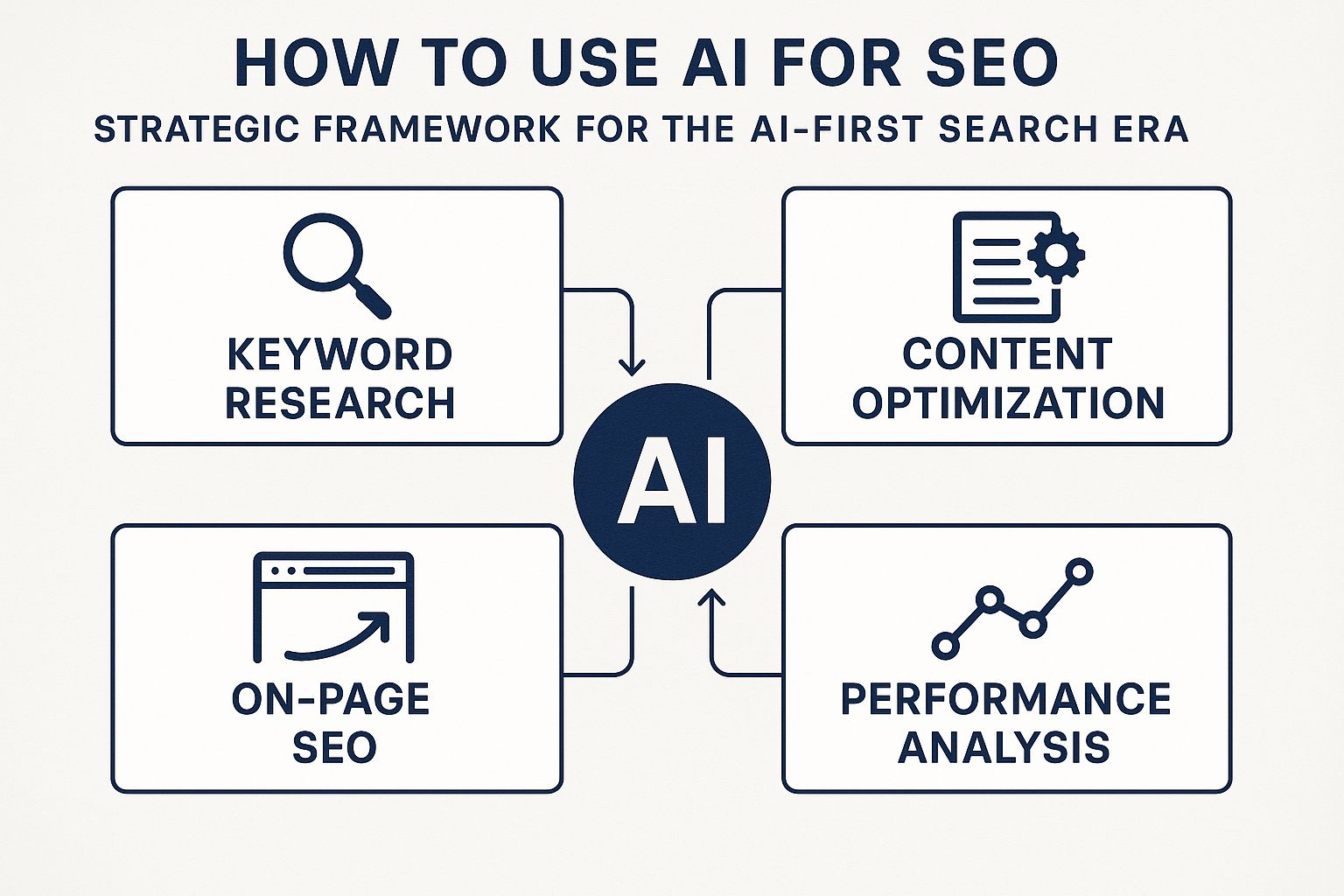Introduction: The AI Shift in SEO
SEO is no longer just about ranking in Google’s blue links. In 2025, visibility depends on being cited in AI-driven answers from Google AI Overviews, Bing Copilot, GPT, and Perplexity.
This shift demands Answer Engine Optimization (AEO). With platforms like SEMAI’s AEO Audit Report (https://semai.ai/ai-answer-engine-optimization-tool/audit-report), brands can measure how AI engines interpret their content and identify gaps that keep them from being cited.
1. From Keywords to Intent Modeling
Search engines once rewarded keyword density. AI engines reward intent fulfillment, using entity graphs and semantic completeness.
Brands must shift toward intent modeling — aligning content to what users want, not just what they type.
- Why: AI prioritizes answers that directly resolve user questions.
- How: Use SEMAI’s Strategy Builder to cluster queries across TOFU → MOFU → BOFU.
- Example: Replace multiple “AI SEO tools” blogs with a knowledge hub that maps jobs-to-be-done queries.
2. Content as Data, Not Just Copy
AI treats content as data nodes — scored, structured, and ranked for trust. Brands must think like data architects, not just content marketers.
- Why: AI engines cite modular Q&A chunks, not generic text.
- How: Use On-Page Content Fixes to break content into 40–60 word answer nodes.
- Example: Apply FAQPage and QAPage schema so AI engines can parse relationships.
3. Predictive SEO: Anticipating Queries
AI makes SEO predictive instead of reactive. You can anticipate tomorrow’s questions before they show up in keyword tools.
- Why: Current GPT/Perplexity answers reveal future gaps.
- How: Run AI query simulations, then close gaps with SEMAI’s Optimization Gaps Finder.
- Outcome: Preempt competitors by owning the answers before they trend.
4. AI-First SEO Metrics (New KPIs)
Clicks and rankings are not enough. AI-first SEO requires metrics that track answer inclusion.
- ASV (Answer Share of Voice): % of AI answers citing you.
- Inclusion Velocity: How fast new content is picked up.
- Attribution Capture: Are citations linked or unlinked?
- Tool: SEMAI’s Scoring Engine helps benchmark these new KPIs.
5. Multi-Surface Optimization
One content asset must work across SERPs, AI Overviews, and voice assistants.
- Search: Long-form articles for depth.
- AI: Short Q&A nodes wrapped in schema.
- Voice: Conversational snippets (~30 words).
- Support: SEMAI’s Content Generation Hub helps adapt content for each surface.
6. AI-Enhanced Authority & Link Building
AI rewards contextual trust, not backlink volume. Visibility depends on being in sources AI already cites.
- Why: Perplexity and Bing Copilot favor high-authority publishers.
- How: Use SEMAI’s Competitor Benchmarking Insights to identify citation networks.
- Strategy: Prioritize outreach where AI engines already pull trusted data.
7. Governance: Human-in-the-Loop SEO
AI can draft at scale, but without human review it risks hallucinations and brand dilution. Governance ensures authority.
- AI Role: Audit, cluster, draft.
- Human Role: Verify, refine, add expertise.
- Support: SEMAI’s AEO Optimization Workflows provide machine scoring + human checkpoints.
8. Risks of Over-Reliance on AI
Automation brings risks if unmanaged. Brands must build resilience and oversight.
- Content Glut: Too much sameness → reduced authority.
- Attribution Decay: AI answers omit links.
- Algorithm Volatility: Retraining shifts citations overnight.
- Solution: Diversify content + monitor inclusion with SEMAI’s Audit Reports.
9. The Road Ahead: SEO + AEO Convergence
By 2026, SEO and AEO will merge. Technical SEO will secure crawlability, but visibility will hinge on answer authority.
- Trend: SERPs matter less, answer visibility matters more.
- KPI: “Cited in 60% of AI answers” > “Ranked #1 for 200 keywords.”
- Role of SEMAI: A full Answer Visibility OS combining audits, content scoring, and strategy planning.
Conclusion: From Search to Answer Ownership
The next evolution of SEO isn’t about traffic — it’s about owning the answers.
With SEMAI’s AEO platform, brands can design structured, intent-driven, machine-trusted content that ensures visibility in AI ecosystems. The winners of tomorrow will be the ones who control their answer authority today.
FAQs
How is AI changing SEO?
AI shifts SEO from keyword ranking to answer inclusion. SEMAI helps identify gaps and build machine-trusted content.
What KPIs matter for AI SEO?
Answer share of voice, inclusion velocity, and attribution capture — all tracked in SEMAI’s Scoring Engine (https://semai.ai/ai-answer-engine-optimization-tool/audit-report/scoring-engine).
Can AI replace SEO teams?
No. AI automates tasks, but humans provide expertise. SEMAI supports both with governance workflows.
What risks exist in AI SEO?
Content glut, attribution loss, and algorithm shifts. SEMAI’s Optimization Gaps Finder (https://semai.ai/ai-answer-engine-optimization-tool/audit-report/optimization-gaps) mitigates these risks.
What’s the future of SEO?
SEO merges with AEO → visibility = being cited in AI answers. SEMAI is building the platform to track and optimize this future.

Leave a Reply